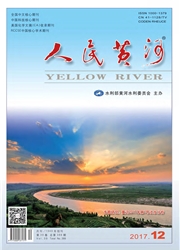

 中文摘要:
中文摘要:
为了解决黄土高原水资源短缺、水土流失等生态环境问题,当地实施的退耕还林(草)、坡改梯等措施使土地利用发生了很大的变化,从而对水文过程产生了深刻的影响。选取南小河沟流域内的杨家沟和董庄沟两条小流域作为研究对象,基于西峰水土保持科学试验站在南小河沟的实测资料,分析研究区1954—2010年的土地利用变化及其水文过程响应。结果表明:南小河沟及杨家沟的土地利用有很大的变化,草地及耕地产流较少,道路及庭院等产流较多,坡面产流<沟谷产流<塬面产流;治理后的杨家沟与未经治理的董庄沟相比,对暴雨最大洪峰流量的削减效益最大,对单次降雨洪水的拦蓄效益次之;相对于草地,林地径流量减少明显,保水削峰效益较高。
 英文摘要:
英文摘要:
In order to solve the problem of water resources shortage and soil erosion in loess plateau, local implementation of returning farmland to forest and grassland, terracing and other measures, great changes have taken place in land use, which has a profound effect on hydrological process. The Nanxiaohegou catchment and its sub-catchments (Yangjiagou catchment and Dongzhuanggou catchment ) were selected as research objects. The changes of land use and the hydrological processes in response to the changes in land use from 1954 to 2010 were analyzed based on the measured data of the Xifeng Soil and Water Conservation Station. The results show that the great changes have taken place in land use of the Nanxiaohegou and Yangjiagou catchments. Grassland and farmland produce less runoff, road and courtyard generate more runoff and the sequence of runoff yield is slope surface 〈 valley 〈 tableland. After controlling, Yangjiagou has the greatest efficiency of reducing the maximum peak flow of rainstorm, the interception of single rainfall presents the second greatest efficiency, and the storage efficiency of average annual runoff process is rather small. Compared to grass land, the forest land reduces runoff significantly and has high water storage and peak clipping efficiency.
 同期刊论文项目
同期刊论文项目
 同项目期刊论文
同项目期刊论文
 期刊信息
期刊信息
